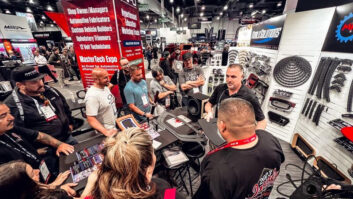A seemingly minor yet important item came out of the Advanced Television Systems Committee (ATSC) this week in regard to the forthcoming Mobile DTV broadcast system.
The ATSC, which coordinated the establishment and implementation of the nation’s digital television broadcasting standard, said it has elevated its specification for Mobile Digital Television to “candidate standard status.”
Yes, that’s right, those “Jerry Springer Show” episodes you’ve been missing while at work all these years may be available to you on your cellphone/TV or wristwatch LCD screen by the end of 2009.
The new status means broadcasters and hardware manufacturers can effectively begin their testing and planning for the new add-on system to the DTV terrestrial broadcasting standard. This will allow the transmission of digital TV broadcasts (in standard definition) to handheld and portable TV receivers, including those used in cars moving at high rates of speed.
In addition to live television, the ATSC Mobile DTV candidate standard provides a flexible application framework for running software on receivers, the ATSC said. Receivers that use an optional Internet connection will enable new interactive television services, ranging from simple audience voting to the integration of Internet-based applications and transactions with television content.
The candidate standard also enables broadcasters to deploy new “data broadcasting” services, such as providing real-time navigation data for in-vehicle use and providing news and sports highlights for “on-demand” use by consumers, according to the ATSC.
The ATSC Mobile DTV candidate standard describes methodology for new services to be carried in digital broadcast channels along with current DTV services without adversely impacting legacy receiving equipment.
The candidate standard stage of ATSC standards development is a call for implementation and technical feedback.
Once established the ATSC Mobile DTV system will be a hybrid platform made up of elements developed by LG, Harris, Samsung and others. It will be based on Zenith/LG-developed vestigial sideband (VSB) modulation scheme used in the current DTV broadcast standard coupled with a flexible and extensible IP based transport, efficient MPEG AVC (H.264) video and HE AAC v2 audio (ISO/IEC 14496-3) coding.












